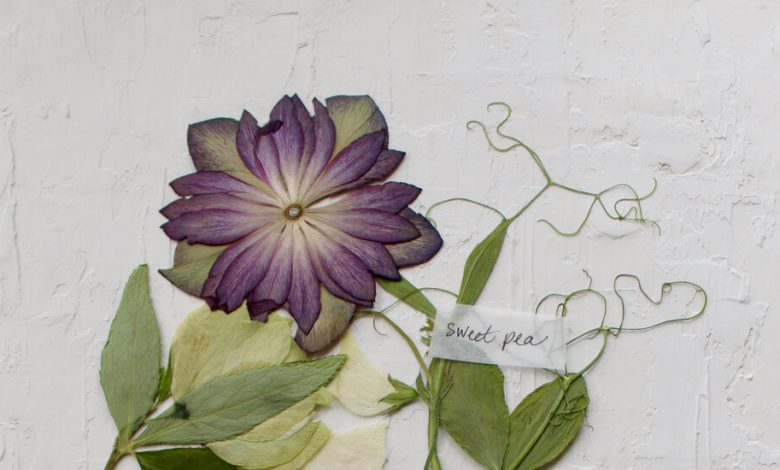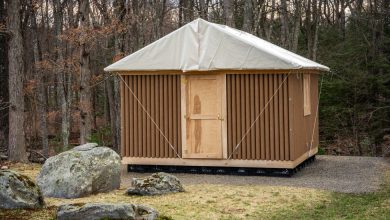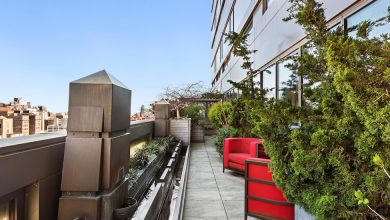Why Are People Still Pressing Flowers? It’s a Form of Storytelling.

My compulsion to garden vividly and expressively comes from Grandma Marion, who always made room for masses of marigolds and zinnias that echoed the colors of the Fiestaware on her pantry shelves. But she also handed down an appreciation for dried, pressed plants, which have a special kind of enduring beauty, faded though they may be.
Two of what she called her “pressed-flower pictures” — pieces of her beloved garden arranged artfully on fabric under glass — hang in my upstairs hall. Lately, I’ve begun to feel that these mementos of a long-ago spring are trying to tell me something. Setting an example for aging gracefully, perhaps, although I doubt that was Grandma’s intention.
She wanted to pass along the spirit of the garden, to honor its importance in her life by making some of her little ephemeral darlings permanent, an enduring message of connection. It stuck.
So it’s no surprise that I feel a kinship with modern-day plant pressers like Linda P. J. Lipsen, the author of a new how-to guide, “Pressed Plants: Making a Herbarium.”
Ms. Lipsen, a botanist, got her start volunteering some 30 years ago at a community college in Oregon, helping to mount pressed specimens for the herbarium. Today, she is a curator at the University of British Columbia Herbarium in Vancouver, founded in 1912.
She and such institutions are part of a 500-year-old tradition of documenting the natural world by using pressed plants as a tool for understanding. Comparing modern-day specimens to historical ones can reveal much about plants’ shifting geographic ranges in a changing climate, for instance, or document the arrival of an invasive species.
For Lacie RZ Porta, another enthusiast, the catalyst to press plants was the urge to preserve her own wedding flowers. At the end of the celebratory weekend, she got panicky.
“I can’t throw them out,” she recalled thinking. “I need them.” So she scrambled to find a way to preserve the rite of passage they embodied.
Before long, she was taking a yearlong sabbatical from teaching preschool and renting a studio. In 2017, she founded Framed Florals in Greenpoint, Brooklyn, specializing in artfully preserving brides’ bouquets between double panes of glass and selling a range of dried floral creations.
There is no hard line between art and science for either of them. “Specimens that don’t work out become cards,” Ms. Lipsen said with a laugh.
Some of Ms. Porta’s pieces include a formal nod to scientific techniques, although customers may not get the reference. One asked why a bit of narrow tape was added across the pressed plant’s stem on a place card, although the stem was already glued down.
That’s how herbarium specimens, particularly those with bulky or woody stems, have historically been finished to make them more secure.
“If you don’t have the back story, and an appreciation for the tradition of pressing, you might ask that,” Ms. Porta said.
No matter the end goal, the maker behind any finished pressing assumes the role of storyteller. Are you ready to join the ranks of these storytellers and answer the call to exsiccation (the insider’s word for drying)?
Creative Liberties vs. Scientific Protocol
As similar as the two women’s processes are, there are differences — the main one being artistic license versus scientific protocol.
In a herbarium, a mounted specimen must bear the plant’s Latin name and the name of its collector, the collection date and the details of the place where it was found. It also needs to include all of the plant’s parts, arranged so we can count its reproductive portions (the pistils and stamens inside a flower, for instance) or see other distinguishing elements, like its root system.
Pretty isn’t the primary goal; accurate reference is. Although, as Ms. Lipsen pointed out, herbarium masters manage to incorporate both science and art in their mounted pressings.
There are no plant names on Grandma’s pictures, but I recognize lily of the valley, pansies and roses (thorns and all) among them. Twenty years ago, I added 14 vintage pressings of seaweed — or, botanically speaking, macroalgae, one of Ms. Lipsen’s specialties — to my walls. Each was labeled with a Latin name and carefully numbered, as if it was part of a series, but the collector’s name and location remain mysteries.
Crafters like Ms. Porta enjoy taking creative liberties — removing the extra-thick center of a rose or coneflower that holds moisture and won’t flatten easily, for example, and instead drying just the petals and arranging them in a design.
“For their craft, they often need to take everything apart and almost put it back together like a puzzle, where we really need to try to keep everything,” Ms. Lipsen said. “That’s why ours are not always as pretty.”
Another important difference: The ethics involved in collecting samples in the field don’t come into play when the plants are from a flower farm or your own garden. These include the matter of gaining permissions and considerations of minimizing the effect of gathering on a particular plant population.
When Ms. Lipsen is out collecting, she brings along sealable plastic bags (one per specimen, so plant parts don’t get mixed up). Ms. Porta’s on-the-go tool of choice: a small notebook held closed with rubber bands, like a miniature press, which she will weigh down under something heavy once she gets home.
Into the Press It All Goes
At Grandma’s, an old wooden contraption held her gatherings between layers of cardboard and paper, clamped down tight with dowels and rope. Other plants began their transition to the afterlife in a hefty, old-fashioned phone book, an absorbent mass of paper that any modern plant preserver would envy.
Ms. Porta and Ms. Lipsen do their drying inside simple presses, too, layered with corrugated cardboard for ventilation and newspaper for absorption. Ms. Porta’s is homemade from two pieces of plywood, with long bolts and wing nuts to secure what goes inside. Ms. Lipsen’s is from a herbarium supply store, with lattice backings on top and bottom, and straps that have locking closures.
One point of agreement: Skip the glossy paper, which is less absorbent, and anything with colored ink, which could discolor a pressing.
Ms. Porta doesn’t use newsprint in the layer closest to her plants; she prefers unbleached craft paper or another plain paper. Ms. Lipsen’s ideal for the layer that rests against the specimens is blotter paper, which is reusable.
But there’s a reality acknowledged by field botanists who collect thousands of specimens and need enough paper to fill many presses: Newspaper is almost universally available, and it’s usually free.
So Ms. Lipsen uses it, but with a caveat: When you’re working with extra-sticky plants, it can backfire. In those cases, she surrounds the plants with wax paper or parchment.
“We have bulbs and algae on which you can actually read the newspaper it came from,” she said. “It’s pretty funny when you see it.”
As Ms. Porta put plants in the press, she gently manipulates them so that they’re “more gestural, to remind you of nature,” she said. That could mean putting a curve in certain stems, “to add organic movement.” But once they are dried, she said, you cannot manipulate them at all.
Ms. Lipsen, who needs to preserve every part of the plant, gets a little rougher.
Plants, which are filled with water, have turgor pressure that makes them stiff. So “when I put them in the press, I’ll literally lean on it, and I’ll hear this crushing sound,” she said. “And then I open it up just to see if there’s anything I want to rearrange. Then I close it back up and let it relax, and go through some cell death.”
After a day or two, when the plants are more malleable, she opens the press for a final adjustment, to make sure each key part is clearly displayed.
Then the drying begins.
This is best accomplished in a warm, well-ventilated space. Both pressers periodically replace any papers that feel moist during the process, which Ms. Porta tells brides will take at least a month. Ms. Lipsen, who dries each specimen on a separate sheet in a room at 75 to 80 degrees, with a fan running, expects most to dry within a week.
When it comes time for mounting, skip the Krazy Glue and the glue gun, Ms. Porta said: Use “just the teeniest amount of any basic, nontoxic glue.”
Ms. Lipsen uses an archival PVC glue from Herbarium Supply Company that dries clear.
Whatever you use, be warned: The wrong glue can backfire — especially with large leaves.
A plant’s cells, and even the paper it’s glued to, will continue reacting to humidity changes over time. “And if the glue doesn’t stretch, it will stretch that specimen to the point where it breaks,” Ms. Lipsen said, something that can be seen in very old mounted pressings.
Someone who loved Grandma Marion before I did apparently knew her weakness for pressed flowers. One of more than 130 letters from her fiancé, Harold Kinney, who was stationed in France during World War I, contained a pressing.
“I’m sending you a flower I picked in a churchyard a few days ago,” he wrote in his formal cursive to the woman he called Snooks, on Feb. 17, 1918. “The church and the graves were all torn to pieces by shellfire. This flower was growing from the moss on the debris, in February.”
He was killed that year, just before the end of the war, but his letters — and that flower, pressed within its pages — have endured, handed down to keep a moment alive.
Margaret Roach is the creator of the website and podcast A Way to Garden, and a book of the same name.
For weekly email updates on residential real estate news, sign up here.




